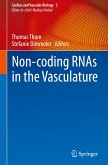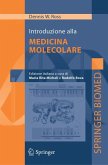Quantitative Real-Time PCR: Methods and Protocols focuses on different applications of qPCR ranging from microbiological detections (both viral and bacterial) to pathological applications. Several chapters deal with quality issues which regard the quality of starting material, the knowledge of the minimal information required to both perform an assay and to set the experimental plan, while the others focus on translational medicine applications that are ordered following an approximate logical order of their medical application. The last part of the book gives you an idea of an emerging digital PCR technique that is a unique qPCR approach for measuring nucleic acid, particularly suited for low level detection and to develop non-invasive diagnosis. Written for the Methods in Molecular Biology series, most chapters include introductions to their respective topics, lists of the necessary materials and reagents, step-by-step, laboratory protocols and tips on troubleshooting and avoiding known pitfalls.
Practical and authoritative, Quantitative Real-Time PCR: Methods and Protocols aims to aid researchers seeking to devise new qPCR-based approaches related to his or her area of investigation.
Practical and authoritative, Quantitative Real-Time PCR: Methods and Protocols aims to aid researchers seeking to devise new qPCR-based approaches related to his or her area of investigation.
From the book reviews:
"The book is a valuable collection of qPCR-related details that cover a wide range of PCR uses. Aimed mainly at researchers (wet lab biologists) with a solid PCR background, the book provides enough details for the novice too, who may find the numerous examples as well as the end notes in each chapter very useful." (Irina Ioana Mohorianu, zbMATH, Vol. 1295, 2014)
"The book is a valuable collection of qPCR-related details that cover a wide range of PCR uses. Aimed mainly at researchers (wet lab biologists) with a solid PCR background, the book provides enough details for the novice too, who may find the numerous examples as well as the end notes in each chapter very useful." (Irina Ioana Mohorianu, zbMATH, Vol. 1295, 2014)








